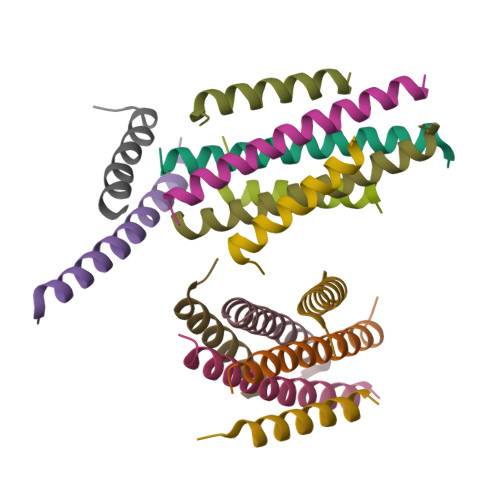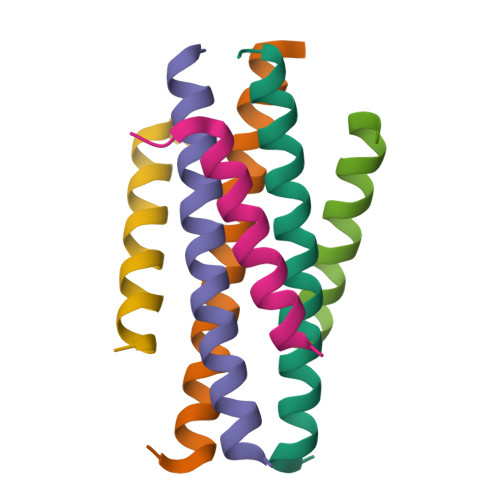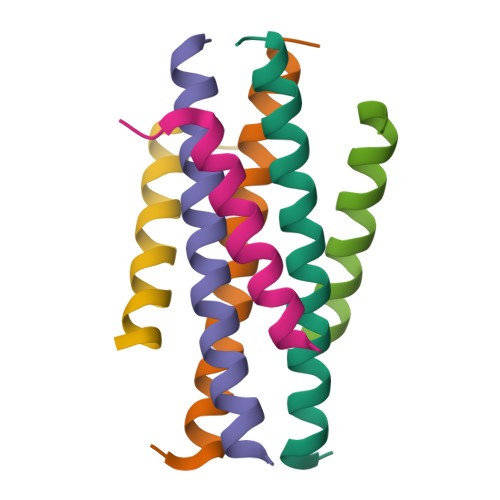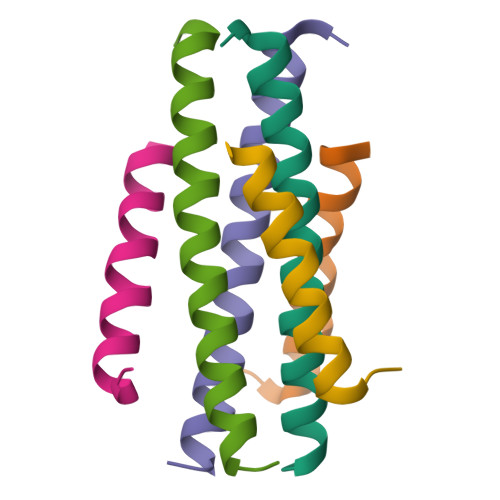Structural Insights into the Mechanisms of Action of Short-Peptide HIV-1 Fusion Inhibitors Targeting the Gp41 Pocket
Zhang, X., Zhu, Y., Hu, H., Zhang, S., Wang, P., Chong, H., He, J., Wang, X., He, Y.(2018) Front Cell Infect Microbiol 8: 51-51
- PubMed: 29535974
- DOI: https://doi.org/10.3389/fcimb.2018.00051
- Primary Citation of Related Structures:
5YB2, 5YB3, 5YB4 - PubMed Abstract:
The deep hydrophobic pocket of HIV-1 gp41 has been considered a drug target, but short-peptides targeting this site usually lack potent antiviral activity. By applying the M-T hook structure, we previously generated highly potent short-peptide fusion inhibitors that specifically targeted the pocket site, such as MT-SC22EK, HP23L, and LP-11. Here, the crystal structures of HP23L and LP-11 bound to the target mimic peptide N36 demonstrated the critical intrahelical and interhelical interactions, especially verifying that the hook-like conformation was finely adopted while the methionine residue was replaced by the oxidation-less prone residue leucine, and that addition of an extra glutamic acid significantly enhanced the binding and inhibitory activities. The structure of HP23L bound to N36 with two mutations (E49K and L57R) revealed the critical residues and motifs mediating drug resistance and provided new insights into the mechanism of action of inhibitors. Therefore, the present data help our understanding for the structure-activity relationship (SAR) of HIV-1 fusion inhibitors and facilitate the development of novel antiviral drugs.
Organizational Affiliation:
College of Life Sciences and Bioengineering, School of Science, Beijing Jiaotong University, Beijing, China.






















